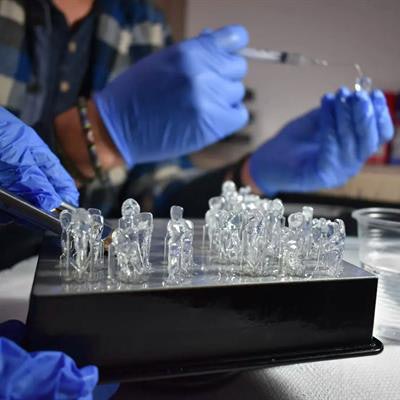
As the coronavirus pandemic spread across the globe, nearly everything changed -- especially education. Teachers from elementary school to higher education had to find new avenues for instruction that kept students engaged and, most importantly, learning critical curriculum.
Because hands-on training is crucial for learning and success in many medical fields, schooling from home left much to be desired. 3D printing emerged as a resource for hands-on remote education in the dental field.
3D printing has facilitated distance learning for dental students, and it's here to stay. The technology enabled an alternative learning method to students as they continued their studies at home during lockdowns. But now, 3D printing offers previously unexplored opportunities for the dental and orthodontic industries, including new methods for training on 3D-printed teeth.
3D printing capabilities in remote education
While online and hybrid dental programs exist, tangible training, such as practical hands-on coursework, is difficult to replicate at a kitchen table that has been converted to an at-home lab. Traditionally, dental students practice techniques on extracted teeth for preclinical training; however in 2020, many students were unable to obtain extracted teeth due to COVID-19 regulations and the pandemic altering traditional curricula.
 Dr. Elisa Praderi.
Dr. Elisa Praderi.To address this shortage, Dr. Gulsah Uslu, an associate professor in the endodontics department at Canakkale Onsekiz Mart University in Turkey, sought out 3D printing as a means to replicate teeth so students could practice root canal treatments remotely. Uslu worked with Btech Dental to develop anatomically accurate artificial teeth models based on preexisting cone-beam computed tomography scans, which included colored root canals.
The 3D-printed teeth provided students with accurate and realistic learning experiences based on real patient cases while giving each student the opportunity to practice on the same exact case, and all without the risk of cross-infection. Each student was evaluated according to a standardized level of complexity, and there was no need to apply a sterilization and disinfection protocol to prepare teeth for preclinical training.
To develop anatomical models for canine teeth, upper and lower molars, and diverse canal variations, the team used Formlabs 3D printers with Formlabs clear resin. The models simulated the feel of real teeth, with the benefit of added transparency for visibility. The combination made it possible to rapidly develop, test, and modify the designs, even during pandemic-induced lockdowns, to meet the requirements needed for accurate endodontic training.
Using the 3D-printed teeth, students practiced procedures like accessing the pulp chamber, root canal preparation, irrigation, and root canal filling and sealing. The transparent models enabled students to identify procedural errors without the need for x-rays.
As students return to the lab and classroom, the models will be an efficient, cost-effective way to train dental students with less equipment and to reduce the reliance on using real teeth in training. It can also reduce the frequency of uncaught errors.
How to encourage the use of 3D printing in dental education
The dental industry is undergoing a digital revolution. Until recently, only large-scale dental labs had access to 3D printing technology. Now, 3D printers are more affordable and accessible due to on-demand training, easy-to-use software and hardware, and a vast library of resins for different applications.
 Image courtesy of Formlabs.
Image courtesy of Formlabs.To continue the momentum of 3D printing adoption in the dental industry, the technology needs to be user-friendly and accessible. Some tools require hours of technical training before they become viable for daily use, but 3D printing technology is now being designed with dentists in mind to make the software and hardware simple and straightforward.
For example, complex CAD software has traditionally been one of the largest barriers to adopting 3D printing in dentistry. Now, software advancements offer users a more simplified starting point to digital dentistry. Users can upload intraoral scans and quickly turn it into a 3D printable design with the click of a button. User-friendly software features like this will lower the barrier to using CAD programs.
Early access to 3D printing technology in dental education can empower the next generation of dental professionals to feel confident with digital workflows, which in turn minimizes the learning curve associated with introducing digital workflows in an already established practice. Additionally, introducing 3D printing earlier in educational settings will advance the industry and enable further digitization of dental practices and labs.
A specialized focus on the needs of dental students can fast-track 3D printing adoption in dentistry, making it commonplace in practices, labs, and educational settings. As digital dentistry continues to grow, 3D printing is necessary in training so that students feel confident and comfortable with these new processes from the get-go.
Dr. Elisa Praderi is a trained dentist from Universidad Católica del Uruguay. She spent three years working at the university's emergency service and in private dental practice before joining Formlabs Dental as clinical protocols manager. She conducted a research study in the area of esthetic dentistry, which she presented to the International Association for Dental Research.
The comments and observations expressed herein do not necessarily reflect the opinions of DrBicuspid.com, nor should they be construed as an endorsement or admonishment of any particular idea, vendor, or organization.



















